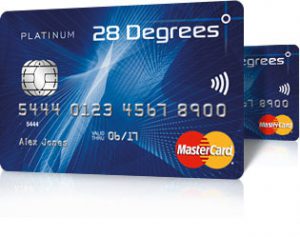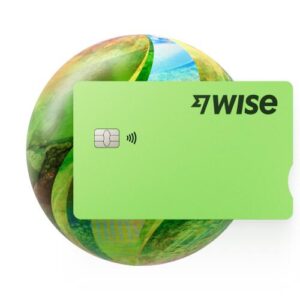4 Best Ways to Take Travel Money Europe in 2025
Travelling can be exciting. From trips to see family and friends overseas, to exploring new cities or taking a beach break, or even travel for business. But whether you’re off on a well earned break to Bali, or headed to the US for work, you’re going to need to figure out the best way to spend money overseas.
Deciding the best way to travel with money overseas without getting hit by high fees and bad exchange rates can be a headache. But it doesn’t have to be. There are plenty of different ways of taking money overseas, each of which has its own pros and cons. This guide walks through 4 of the best ways to pay overseas so you can decide on the option that suits you best.
Best ways to take money to Europe
In this guide we’ll walk through 4 of the most practical and popular ways to take money to Europe, including our top picks for providers to look at, pros and cons. Here are the common ways to pay overseas that we’ll investigate:
Prepaid travel cards to use in Europe
Ideal for: setting your travel budget ahead of time or on the go, converting between currencies anytime in an app, and making secure and convenient payments and withdrawals
Prepaid travel cards are usually linked to a digital account you can top up by card or with a bank transfer in AUD, before switching over to the currency or currencies you need for your trip. Some cards also let you leave your money in dollars, and automatically convert at the point of payment, with no extra foreign transaction fees to pay.
Most prepaid travel cards support a selection of major currencies. For a trip to Europe, bear in mind that although euros are used in 20 or so countries, there are actually plenty of other European currencies too. Check the card you pick supports all the currencies you need for your trip, so you don’t get stuck with high foreign transaction fees if you spend unsupported currencies. It’s also worth looking for a card with no inactivity fee and no ongoing charges, so you can simply hold on to your card once you're back from Europe, to top up and use on your next foreign trip.
Learn more about our picks for the 6 best prepaid cards.
Wise - our pick for prepaid travel card
With this card:
- Hold and exchange 40+ currencies in your linked Wise account
- No annual or monthly fees to pay, and no minimum balance requirement
- Currency exchange uses the mid-market rate with no markup
- Some free ATM withdrawals available every month
- Virtual and physical cards available
| Wise card pros | Wise card cons |
|---|---|
| ✅ Currency exchange uses the mid-market rate
✅ No foreign transaction fees apply ✅ Free to hold and spend 40+ currencies ✅ Receive payments to your Wise account in a selection of global currencies ✅ No minimum balance or ongoing fees |
❌ 10 AUD fee to get a card in the first place
❌ Free ATM withdrawals are limits to 2 per month, to the value of 350 AUD. Fees of 2% + 1.5 AUD after that ❌ Express delivery fees if you want to get your card as soon as possible |
Pros and cons of taking money to Europe with a prepaid travel card
Pros:
- Convenient for both spending and cash withdrawals
- Secure as not linked to your everyday AUD account
- Many cards support a selection of major currencies, usually including EUR and GBP
- Cards are often available with no ongoing fees to pay
- Currency exchange may have better rates than a bank will offer
Cons:
- Less common European currencies may not be supported for holding and exchange
- ATM fees may apply, depending on the card you pick
- Some cards charge a fee if you spend in an unsupported currency, or if you spend a currency you don’t hold in your account already
Travel debit cards to use in Europe
Ideal for: spending overseas with no need to carry cash, and no chance of running up interest or penalty fees
Travel debit cards are often available from specialist online services, and allow you to top up a balance in a linked account, to spend and withdraw in foreign currencies conveniently. Different cards have their own features, often including extra travel perks and benefits. Plus, because they’re debit cards not credit cards, there are no restrictive eligibility requirements, and there’s no chance of accidentally overspending and blowing your budget.
As with prepaid cards, you’ll often find that travel debit cards are linked to a multi-currency account you can use to hold the currencies you need for your trip. You’ll have to double check that all the European currencies you’ll need are available, and again, picking a card which supports a broad range of currencies will also mean you can use it for the next time you go away, too.
We’ll go into more detail about our top pick for a travel debit card - Revolut - next, and you can also read more about the best travel debit cards in Australia here.
Revolut - our pick for travel debit card for Europe
With this card:
- Hold and exchange 25+ currencies, free to spend currencies you hold
- Choose the account plan that suits your needs and spending, including some with no monthly fees
- Some fee free ATM withdrawals and currency exchange with the mid-market rate, based on the account tier you choose
- Extra perks like accounts for under 18s, plus cash back on card spending for top tier account holders
- Travel benefits offered for some account plans
| Revolut card pros | Revolut card cons |
|---|---|
| ✅ Hold and exchange 25+ currencies, spend currencies you hold for free
✅ Choose from different account tiers to suit different customer needs ✅ Get some free ATM withdrawals every month, depending on the plan you pick ✅ Get some currency exchange every month which uses the mid-market rate - limits vary by account plan ✅ No card order fee |
❌ Ongoing fees apply for some account tiers
❌ Out of hours fees push up currency exchange costs on the weekend ❌ ATM fees of 2% apply once you exhaust your free withdrawals |
Pros and cons of taking money to Europe with a travel debit card
Pros:
- Convenient and safe as you won’t need to carry a lot of cash at any one time
- Many cards come with linked accounts you can use to hold a selection of foreign currencies
- No interest or penalty fees - just top up the amount you want to spend and you’re done
- Not connected to your main AUD account, adding a layer of security when you’re overseas
Cons:
- Some transaction fees usually apply
- Not all European currencies are likely to be covered by all cards - check the currency or currencies you need are supported
- Some cards have monthly fees to pay to get full feature access
Taking cash in Europe
Ideal for: day to day use when tipping, taking a taxi, shopping in a market - and for use in some European countries where cash is still very commonly used
Use of cash in Europe is declining year on year as people switch more to mobile and card payments. However, the European Central Bank reports that over 50% of payments in Europe are still made in cash, with citizens of some countries far more reliant than others on paying in cash. Bulgaria and Greece for example, make it into the top 15 of countries most reliant on cash globally.
Carrying a lot of cash at any one time isn’t a great plan for security reasons, but having some with you is definitely a bonus. Small stores, markets and taxi drivers may not be able to take a card payment, and tipping is still usually done in cash around Europe too.
You can exchange dollars for most European currencies before you travel if you like, although this may not net you the best available exchange rate. If you carry AUD cash with you, you’ll often be able to exchange it with money changers once you arrive, but how easy this is will depend entirely on where you’re headed, as exchange services are far more common in large cities than in smaller towns and rural areas.
Generally the most convenient way to get cash for your trip to Europe will be to make ATM withdrawals as and when you need to. This will mean you don’t need to carry too much all at once, and if you use a dedicated travel card to make your withdrawal you may cut your overall costs, too.
Do I need cash in Europe?
The euro is probably the currency we most commonly think of when we think about Europe - but it’s not the only currency used there. EUR is the official currency in 20 countries, but you’ll need to double check the currency used in your destination - if you’re headed to the UK you’ll need pounds, Bulgaria uses lev, and Poland uses zloty for example.
Wherever in Europe you’re heading, carrying a little cash is a good idea, for tipping and small purchases among other things. However, there’s no need to carry lots of dollars to convert, or lots of foreign currency, if you don’t want to. Just use a prepaid card or travel debit card to make ATM withdrawals and you’ll be able to get the cash you need, when you need it, often with low or no fees, depending on the card you pick.
Learn more about currencies in different European countries here.
How to buy the currency or currencies needed on arrival in Europe?
You’ll usually be able to exchange a major currency like AUD with money changing services in European cities and tourist areas. There are commonly exchange desks in airports and railway stations, too, serving international arrivals from all over the world. Check the exchange rates and fees before you switch your dollars for euros or whichever currency you need in your destination - airport exchange services are often not great value, so you may be better waiting until you reach the city centre instead.
How to buy European currencies in Australia?
If you choose to, you can also often exchange AUD to the currency you need in advance in Australia. How easy this is will depend on where you’re headed, but major European currencies are held by a service like Travelex which allows you to order whatever you need online and either collect your cash in a branch or have it delivered to home. Fees and exchange rate markups may apply, so do compare your options before you commit.
Best place to get euros and other European currencies from
There’s no single best place to get your travel cash - it’ll all depend on where you’re heading and how good a rate you can find either at home or on arrival. Compare a few options and bear in mind that it’s usually worth avoiding currency exchange in the airport or in your hotel.
| Cash pros | Cash cons |
|---|---|
| ✅ Great for tipping, shopping in markets and other times only cash will do
✅ Convert in advance or take dollars and switch on arrival ✅ Set your budget in advance so you know exactly what you have to spend |
❌ Carrying a lot of cash isn't safe - tourists are often targeted by petty thieves
❌ You’ll have to invest time during your break or in advance, shopping round to get a good deal ❌ Exchange rates vary widely and usually include a markup - an extra fee |
Best way to withdraw money overseas?
Withdrawing money from a local ATM once you arrive in your destination is convenient, and can be safer than carrying a lot of cash all at once - but it can also be expensive.
The exact costs you incur will depend on the specific card you use, including whether it’s a credit or debit card. With either card type you’ll need to check what foreign transaction fee is levied - this is often about 3% every time you withdraw. If you’re using a credit card you’ll usually also pay a cash advance fee which is a further percentage charge, and you may start to accrue interest instantly, too.
Getting a travel debit card, like the Wise card, can be a good option for taking money out from ATMs in the local currency. With Wise you get some fee free withdrawals every month, with low costs after that - plus there’s no foreign transaction fee, and you’ll get the mid-market rate every time.
How much cash can I take overseas
There’s not actually a cash limit for overseas - but you’ll need to report to AUSTRAC or at the border if you’re exporting currency (AUD or any other currency) of 10,000 AUD or more in value.
In reality, the more cash you carry, the more you’re risking if you’re unfortunate enough to be the victim of crime. Carrying a small amount of cash, plus one or more cards to make withdrawals as and when you need to, is usually a more sensible option.
Travel credit cards to use in Europe
Ideal for: spreading the cost of a trip over several months - plus sometimes only a credit card will do, such as when renting a car
Travel credit cards usually have specific features which make them good for overseas use. This might include low or no foreign transaction fees, or more ways to earn rewards when you spend in foreign currencies. You can also often trade your rewards for discounts on future travel bookings, and you may find some cards come with complimentary insurance.
Spending with a credit card overseas can be a good option if you’d rather pay for your trip over a few months - although interest will apply in this case, pushing up the overall cost. There are also a few scenarios where a credit card is preferred, such as when you check into a hotel or rent a car, where a credit card may be accepted as a payment guarantee. Bear in mind though, that using a credit card at an ATM is a very expensive option, with cash advance fees and interest mounting up quickly.
Learn about the best travel credit cards in Australia here, and read on for more on our top pick.
28 Degrees - our pick for travel credit card
With this card:
- Order online and start spending with your virtual card instantly if approved
- No annual or monthly fees
- No foreign transaction or currency conversion fees
- Make ATM withdrawals overseas - fees apply for this service
- Unlock perks like discounts on travel bookings and internet roaming packages

| 28 Degrees pros | 28 Degrees cons |
|---|---|
| ✅ No annual or monthly fees
✅ No foreign transaction fees - your payment is converted to AUD using the Mastercard exchange rate ✅ Repay your bill in full monthly to avoid interest or penalty fees ✅ Travel perks and partner discounts available |
❌ Cash advance fee of 3% or 4 AUD (whichever is greater), plus interest, when making an ATM withdrawal
❌ Interest charges apply if you don’t repay your bill in full monthly ❌ Subject to eligibility and credit checks |
Pros and cons of travel credit cards to Europe
Pros:
- Earn rewards and discounts, or get travel perks - depending on the card you pick
- Spread your costs out over a few months
- Some cards have low or no foreign transaction fees
- Credit cards are useful as a payment guarantee in some situations
Cons:
- Interest and fees usually apply if you don’t pay back your bill immediately
- Cash advance and interest costs apply when using an ATM
- Eligibility rules apply
Travel requirements from Australia to Europe
Much of Europe - but not all - is covered by the Schengen agreement. This allows for borderless travel within the member countries, with unified visa and visa waiver rules. If you’re heading to a Schengen country you won’t need a visa for visits of up to 90 days in most situations. If you’re headed to somewhere outside the Schengen area you’ll have to double check the rules, although visa waivers are common in many European countries, to allow tourists to enter hassle free.
Check the government’s Smart Traveller website to learn more, including which countries are in Schengen and which have other arrangements for Australian visitors.
Does Europe accept Australian dollars?
No. You won’t be able to spend AUD anywhere in Europe. If you’re carrying dollars with you you'll need to exchange them for the local currency wherever you are.
Best currency to take to Europe
If you’re planning on exchanging cash in Europe you’ll be fine to carry AUD. However, you’ll need to double check the currency or currencies you need if you’re going to exchange in advance of travel. While 20 or so European countries use euros, there are notable exceptions - and you don’t want to end up in Europe with a currency you can’t easily use.
Top travel money tips to Europe
Here are a few final tips to help your money go further while you’re away:
- Double check the currency you need for each destination you’re visiting, there are close to 30 different currencies in use in Europe!
- Have several different payment methods in case one isn't accepted wherever you are
- Get a travel money card before you leave to make it easier and cheaper to spend and withdraw in Europe
- Avoid common travel money traps in Europe with this handy guide
How much money do I need per day in Europe?
Europe is a very varied place, so how much you’ll need to pay for your visit will depend a lot on where you’re headed and what you like to do. To put this in context, in a fairly expensive city like London, you’ll find a 3 course lunch for 2 will set you back in the region of 150 AUD, and a single bus ride could be almost 6 dollars. However, lots of museums and attractions in London are free - so there are some savings to be had there too if culture is your thing.
Do some detailed research to see how much things are likely to cost wherever you’re headed, so you can plan your budget. Get more detailed cost information by country and city, from Numbeo.com.
How much does it cost to fly from Australia to Europe?
Flight costs vary widely depending on where in Australia you’ll leave from and where exactly you need to be in Europe. At the time of writing (August 2023), you can find flight deals from around 1,300 AUD return from Sydney to a selection of major European cities, for example.
Conclusion
There’s no single best way to take money to Europe, and for most people, having a variety of ways to pay makes sense because then you have a back up plan if one payment method isn’t accepted. One good idea is to get a travel card - such as a prepaid travel card from Wise or a travel debit card from Revolut - to use for spending and withdrawals, and to carry this alongside your regular debit or credit card for emergencies, and a little cash. This will often mean you can cut the costs of overseas spending, by using your specialist travel card, and you can stay safe by minimising the amount of cash you need to hold at any given time.
Use this guide to decide which option to take money to Europe will work best for you, based on your own preferences and needs.
FAQ - Best ways to take money to Europe
Should I exchange money before I travel to Europe?
You won’t necessarily need to exchange money before you travel - making a cash withdrawal at an ATM on arrival in your destination can also work well, and may also be better value overall if you have a travel card from a provider like Wise or Revolut. If you’d prefer to carry cash when you leave, shop around to find the best exchange rates for the currency or currencies you need.
Can I withdraw euros from a local ATM?
You can’t withdraw any European currency at a normal ATM in Australia, but you’ll be able to get the local currency wherever you are on arrival easily. Use a travel card and your withdrawal may even be free.
Are prepaid travel cards a good way to take money to Europe?
Travel prepaid cards from services like Wise have some great features like multi-currency balances and low or no ATM fees. They can also be a safe way to spend when abroad - consider getting a travel prepaid card to use alongside your other preferred payment methods, to bring down the costs of your trip.
Can I use cash in Europe?
Yes. It’s unusual to find places where you can’t use cash - although cashless payments are preferred in some stores, particularly in Scandinavian countries. Having some cash in local currency, and a travel card, is a good way to make sure you’ll be able to pay no matter what happens.


